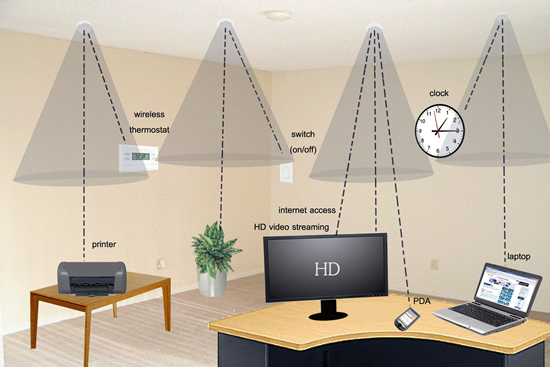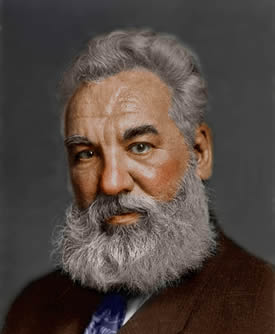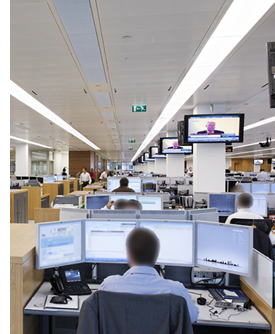LED luminaires are capable of replacing wi-fi – by transmitting data at high frequency. The first commercial installation of a visible light communication network using light fittings has been completed in the US – and researchers reckon it’s the next big thing, as the following article originally published by Lux magazine reports:
|
In the far corners of the world, research teams are pushing forward an emerging area of technology known as Visible Light Communications (VLC), which uses the rapid flickering of advanced LEDs to encode data. The work was pioneered in Japan by the Visible Light Communications Consortium (VLCC). On the back of its research – which could change the way information is sent and received – the US has invested £11.5 million to help develop VLC, and the Chinese government has injected investment funds of its own. In Europe, Oxford and Edinburgh universities are involved in research, as are firms such as Siemens. 
In the vanguard Japan and Korea have led the way so far. For example, Nakagawa Laboratories has been pioneering the technology since 2003, working with educational bodies. One of those partners, Shinichiro Haruyama at the department of information and computer science at Keio University in Japan says: 'Because LED lighting is used in so many places, achieving this would make it [lighting systems] a ubiquitous network.' The main catalyst behind VLC has been the rapid development of the lighting industry's shining star, LED technology. Uniquely, the LED responds quickly to 'on' and 'off' signals. By flickering an LED light on and off in specific patterns at speeds imperceptible to the human eye, data can be transmitted and received. Basic LEDs should be able to send data at rates as high as 40Mb per second, RGB LEDs up to 100Mb per second and resonant-cavity LEDs (fitted with reflectors for spectral clarity) at even faster rates. Last year, using a white LED from Siemens subsidiary Osram, researchers from Corporate Technology in Munich succeeded in transmitting data across a distance of five metres. The researchers used an Ostar LED, modulated at a frequency that that made data transfer rates of up to 500Mb per second possible. The researchers were also able to show that a system combining up to five LEDs is capable of transferring data over longer distances at rates as high as 100Mb per second. A sense of place Niigata University in Japan is also looking at developing the technology as a positioning system, collecting data from luminaires. Liu Xiaohan, who is part of the development team, believes it could be used in applications such as guiding visually impaired people in buildings. 'If we use LED and image sensors as the receiver, we can reach an accuracy of less than five centimetres,' he says. 'It is far more accurate than other location technologies, but the biggest problem is cost. Adapting existing light fixtures for VLC functionality will be a huge task.' Although development has been spearheaded in the East, the first commercial installation has been completed in the US at six municipal offices in St Cloud, Minnesota – including City Hall, the police department, the fire station, a wastewater treatment facility, the civic centre and the public works central maintenance building. The system, from Minnesota start-up LVX System, uses LED luminaires to connect office computers to the internet. Patented modems receive the light signals and transfer their own light back to the ceiling luminaires. They can only transmit data at about 3Mb per second, but LVX chief executive officer John Pederson says a second-generation system that will roll out in about a year will achieve speeds on a par with commercial Wi-Fi networks. Ironically for the city, the data networking capability is secondary to the energy-saving characteristics of the installed LED system and, at least initially, the data transmission system is just a bonus. Follow the trail Because the LEDs can also change colour, Pederson says they could be combined with personal locators or tiny video cameras to guide people through large buildings, showing a trail of green LEDs to an emergency exit, for example. While far more work will need to be done on VLC to make it commercially viable, the data speeds achieved in the Siemens experiments suggests that high speed networks based on LED installations could be a ground-breaking way to transmit data. All eyes will be on the project at St Cloud because it will provide the first real evidence of whether such a light-based network is robust enough to be used in other applications. |
|
That light bulb moment There is nothing new under the sun. The first attempt to use visible light to carry data was made in 1880 by Alexander Graham Bell and his assistant Charles Tainter. The pair's 'Photophone' used crystalline selenium cells at the focal point of its parabolic receiver.This material's electrical resistance varies inversely with the illumination falling on it and the idea of the Photophone was to modulate a light beam. The resulting varying illumination of the receiver induced a varying resistance in the selenium cells, which were used by a telephone to regenerate the sounds captured at the receiver. Bell and Tainter held the world's first wireless communication over a distance of 213 metres in April 1880, but although Bell called the Photophone his 'most important invention' its significance was not appreciated until years later. |

|
 |
| Alexander Graham Bell was a light communications pioneer | LED lighting opens up the possibility of using high-frequency switching to send data |